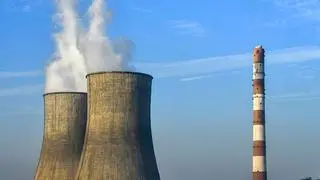Looking back at 2020, it appears that copper was a perfect story for the bulls to ride on. Stockpiling in China, strong industrial recovery, disrupted mines and flip-flop on Chinese scrap import policy created a deficit of metal.
The metal’s exchange inventories fell by 67 per cent in a year. The International Copper Study Group (ICSG) assessed nearly 500 kt of seasonally-adjusted deficit in last 12 months.
While fundamentals had supported higher prices from March lows, the key question is whether prices have gone too far. If Chinese bond yields are any guide, it looks like speculators have built-in premium beyond Chinese growth potential. Any country’s 10-year bond yield is a typical indicator of its growth trend. Generally, bond yields rise ahead of economic recovery. Inversely, yields fall once market anticipate peaking of growth cycle.
The chart shows that Chinese 10-year bond yields bottomed in 2009 and peaked in 2011. Copper, that tracks industrial recovery in China, has been following bond yields for the same reason. The year 2014 is an exception as when Chinese bond yields spiked due to shooting inflation, the two trends —copper and 10Y bond yields — have moved almost together.

Hope of recovery
Since March 2020, both have trended higher together. However, in the latest rally, copper’s rise has outpaced bond-yields by the widest margin in the past 12 years. This means that there is hope of recovery in copper prices than what the (a far larger set of) bond investors think.
Interestingly, Chinese bond yields have nudged lower in the recent weeks. This could be caused by slowing flow of stimulus, tightening restrictions on home ownership and rising cases of Covid-19 causing regional lockdowns. Yet, copper prices have shown no respect for the change. This suggests that speculative strength in copper is stubbornly high and is far bigger than the last stimulus cycle of 2009-2011.
The breakdown of link between Chinese bond-yields and copper prices is just another example (amongst many) of how far the red metal has diverged from the ground reality.
The writer is founder, CEO of Metal Intelligence Centre (MIC), an information hub for metals. Views are personal.







Comments
Comments have to be in English, and in full sentences. They cannot be abusive or personal. Please abide by our community guidelines for posting your comments.
We have migrated to a new commenting platform. If you are already a registered user of TheHindu Businessline and logged in, you may continue to engage with our articles. If you do not have an account please register and login to post comments. Users can access their older comments by logging into their accounts on Vuukle.